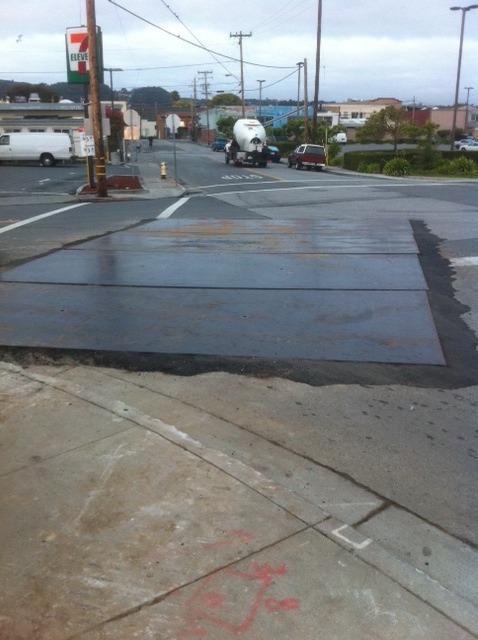Steel Road Plates for Beginners
Wiki Article
The Main Principles Of Steel Road Plates
Table of ContentsGetting My Steel Road Plates To WorkNot known Facts About Road PlatesThe 6-Minute Rule for Road Plate SteelAll about Steel Road Plates
Box culverts are economical due to their strength and monolithic activity as well as separate foundations are not required. It is used in unique situations, weak structure.Typical compaction demands for a task may range from 90% to 95% of conventional Proctor for non-structural locations to 98% or more of changed Proctor for greatly packed pavements. Proctor tests are soil moisture-density partnership tests that develop maximum completely dry thickness (the unit weight of the dirt minus the weight of water) and the maximum water web content for dirt examples.
Water is included to 4 to six portions of the dried dirt example in boosting amounts. The completely dry thickness enhances as the included moisture lubricate the soil particles and make it possible for better compaction from the exact same used power.

Some Of Road Plate
The dampness material is established using a gas-pressure dampness tester or basic area dry-back techniques. Thickness and also wetness outcomes are outlined against the initial research laboratory contour to validate a suit. In situations where lab information is not available, the field point results may be compared to a family of curves assembled from regional or local soil information to choose the best maximum thickness and optimal moisture contour.A soil compaction examination uses among numerous techniques to measure the dry thickness as well as dampness content of the soil in location. The 3 most common are reviewed here - road plate steel. Outcomes from these field examinations are contrasted to the Proctor examination outcomes of the same dirt established busy and also the ratio is shared as the percent compaction.
1ft (2,830 g/cm). Thickness examination accessories such as mallets, scoops, blades, and also example bags are used during excavation. All the excavated material is carefully collected and conserved in an impermeable container. The pre-weighed Sand Cone Density Apparatus is inverted onto the base plate as well as the steel cone is nestled into the base plate opening.
Later, the partially loaded device is evaluated once again, as well as the volume of the test opening is calculated by dividing the mass of the sand filling up the hole by the mass thickness of the sand. The damp weight of the recouped excavated dirt is split by the examination opening volume to determine the damp density.
The smart Trick of Steel Road Plates That Nobody is Talking About
The percent compaction for the field thickness test is calculated by separating the dry density of the soil by the maximum dry density from the proctor examination. Pros, Cons, Accurate and trusted; a lengthy background of accepted use, Tests may take 30 mins or more to finish, ASTM conventional test technique, Heavy tools in the area may need to stop briefly operation briefly, Does not require considerable training, Alternative examinations need to be utilized where appreciable quantities of +1 - road plate.
The examinations are a little bit easier to perform than the sand cone as well as can be repeated swiftly given that the water is preserved in the vessel. Pros, Cons, Accurate and trusted; a long background of accepted use, Tests view it might take 15-20 minutes or more to complete, ASTM typical examination technique, Balloon membrane layers can puncture throughout testing, Does not require considerable training, Planned for fine-grained or granular soils Resources without considerable amounts of crude material, No licensing or allowing required for use, Ought to not be made use of to examine soft saturated, extremely plastic soils, Numerous tests can be performed without transforming thickness media, All dug deep into product must be carefully gotten rid of, Equipment is cost-effective Wetness web content as well as system weight need to be carried out on kept soil examples from either a sand cone or rubber balloon tests to finish computations for soil compaction.
The graph below programs a few different approaches that can be made use of for moisture determinations and also there are a range of scales and balances that can be made use of for weighing soil samples in research laboratory or area setups. Nuclear density evaluates establish soil thickness by measuring gamma radiation transmission in between a probe having a radioactive Cesium 137 (or other) resource and also Geiger-Mueller detection sensors in the base of the scale.
Road Plate Fundamentals Explained
Soil dampness is gauged at the same time using a separate resource of Americium 241. A steel pole is driven right into the dirt at the examination website, forming a pilot opening. The probe containing the radioactive source is lowered up to 12in (305mm) into the pilot opening, and radiation transmission is determined for one min.
Report this wiki page